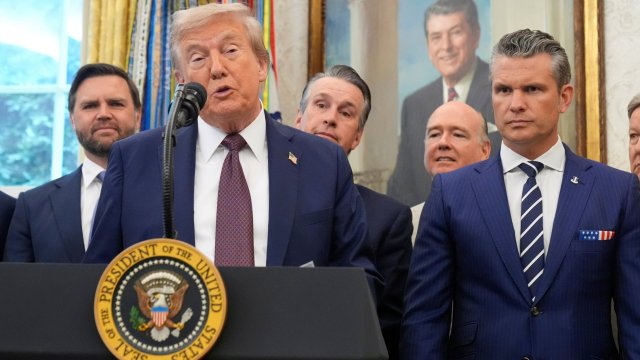U.S. President Donald Trump has announced plans to resume nuclear weapons testing, marking a major reversal of a policy that has been in place for more than three decades.
In a post on Wednesday night, Trump acknowledged the “tremendous destructive power” of nuclear weapons but said he had “no choice” but to update and renovate the U.S. nuclear arsenal during his first term in office. He added that China’s nuclear programme “will be even within five years,” stressing that the U.S. must not fall behind.
While Trump did not specify how or when the tests would occur, he wrote that the “process will begin immediately.” The announcement came just before Chinese President Xi Jinping landed in South Korea for the first face-to-face meeting between the two leaders since 2019.
Speaking aboard Air Force One after the meeting, Trump said the locations of the test sites would be decided later but insisted it was “appropriate” for the U.S. to match other countries conducting weapons tests.
The last U.S. nuclear test took place in September 1992, when then-President George H.W. Bush imposed a moratorium as the Cold War ended. The test, codenamed Divider, was the 1,054th nuclear test in U.S. history and was carried out underground at the Nevada Test Site, 65 miles north of Las Vegas.
Trump’s announcement follows Russia’s recent testing of two new weapons systems capable of carrying nuclear warheads, including a hypersonic missile and an underwater drone, the Poseidon, designed to strike coastal targets and generate radioactive ocean swells. However, those Russian tests did not involve nuclear detonations.
According to the Center for Strategic and International Studies (CSIS), China has doubled its nuclear arsenal in the past five years and could exceed 1,000 warheads by 2030. The U.S. currently holds about 5,225 nuclear warheads, while Russia maintains roughly 5,580, according to the Arms Control Association.
Trump’s decision also comes just 100 days before the expiration of the New Strategic Arms Reduction Treaty (New START) in February 2026 , which is the last remaining nuclear arms treaty between the U.S. and Russia. The treaty limits each side to 1,550 deployed warheads on intercontinental missiles.
The U.S. first entered the nuclear era with the Trinity Test in July 1945, later becoming the only nation to use atomic weapons in war when it bombed Hiroshima and Nagasaki that August.
Experts warn that resuming nuclear testing could trigger a new global arms race and undermine decades of non-proliferation efforts thereby reopening an era of uncertainty not seen since the Cold War.




